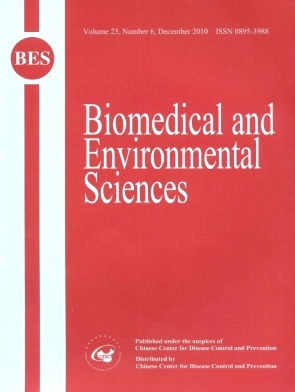Maternal and Fetal Exposure to Four Carcinogenic Environmental Metals
-
Key words:
- Carcinogenic metals /
- Exposure in utero /
- Maternal blood /
- Cord blood /
- Environment
Abstract: Objective To examine maternal and fetal exposure levels to four carcinogenic metals, arsenic (As), cadmium (Cd),nickel (Ni), and beryllium (Be), and to investigate their environmental influences. Methods Metal concentrations in maternal and umbilical cord blood were measured by inductively coupled plasma-mass spectrometry (ICP-MS). Environmental factors that might play a role in exposure were analyzed using Mann-Whitney nonparametric U-tests and multiple linear regression. Results The concentrations of As, Cd, and Ni in umbilical cord blood (5.41, 0.87, and 139.54 μg/L) were significantly lower than those in maternal blool (6.91, 1.93, and 165.93 μg/L). There were significant positive correlations between the maternal and cord concentrations of each carcinogen. Our results showed that: (i) exposures to potentially harmful occupational factors during pregnancy were associated with high levels of maternal As, Cd, and Ni; (ii) living close to major transportation routes (<500 m) or exposure to second-hand smoke during pregnancy increased the maternal Cd levels and (iii)living close to industrial chimneys induced high maternal Ni levels. Multiple linear regression analysis showed that these environmental factors remained significant in models of the influences of these four carcinogens. Conclusion Both mothers and fetuses had been exposed to As, Cd, Ni, and Be. The increased levels of these carcinogens in pregnant women were associated with some detrimental environmental factors, such as occupational exposure, contact with second-hand smoke and living close to major transportation routes or industrial chimneys.
| Citation: | Huai GUAN, Feng-Yuan PIAO, Xiao-Wei LI, Qiu-Juan LI, Lei XU, Kazuhito YOKOYAMA. Maternal and Fetal Exposure to Four Carcinogenic Environmental Metals[J]. Biomedical and Environmental Sciences, 2010, 23(6): 458-465. |







 Quick Links
Quick Links
 DownLoad:
DownLoad: